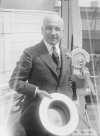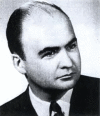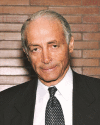Historical perspectives of lung transplantation: connecting the dots
- PMID: 30174905
- PMCID: PMC6105978
- DOI: 10.21037/jtd.2018.07.06
Historical perspectives of lung transplantation: connecting the dots
Abstract
Lung transplantation is now a treatment option for many patients with end-stage lung disease. Now 55 years since the first human lung transplant, this is a good time to reflect upon the history of lung transplantation, to recognize major milestones in the field, and to learn from others' unsuccessful transplant experiences. James Hardy was instrumental in developing experimental thoracic transplantation, performing the first human lung transplant in 1963. George Magovern and Adolph Yates carried out the second human lung transplant a few days later. With a combined survival of only 26 days for these first 2 lung transplant recipients, the specialty of lung transplantation clearly had a long way to go. The first "successful" lung transplant, in which the recipient survived for 10.5 months, was reported by Fritz Derom in 1971. Ten years later, Bruce Reitz and colleagues performed the first successful en bloc transplantation of the heart and one lung with a single distal tracheal anastomosis. In 1988, Alexander Patterson performed the first successful double lung transplant. The modern technique of sequential double lung transplantation and anastomosis performed at the mainstem bronchus level was originally described by Henri Metras in 1950, but was not reintroduced into the field until Pasque reported it again in 1990. Since then, lung transplantation has seen landmark changes: evolving immunosuppression regimens, clarifying the definition of primary graft dysfunction (PGD), establishing the lung allocation score (LAS), introducing extracorporeal membrane oxygenation (ECMO) as a bridge to transplant, allowing donation after cardiac death, and implementing ex vivo perfusion, to name a few. This article attempts to connect the historical dots in this field of research, with the hope that our effort helps summarize what has been achieved, and identifies opportunities for future generations of transplant pulmonologists and surgeons alike.
Keywords: Extracorporeal membrane oxygenation (ECMO); history; immunosuppression; lung transplantation; primary graft dysfunction (PGD).
Conflict of interest statement
Conflicts of Interest: The authors have no conflicts of interest to declare.
Figures
















References
-
- Carrel A. The surgery of blood vessels, etc. Johns Hopkins Hospital Bulletin 1907;18:18-28.
-
- Demikhov VP. Experimental transplantation of vital organs. New York: Consultants Bureau, 1962.
Publication types
LinkOut - more resources
Full Text Sources
Other Literature Sources
Research Materials
Miscellaneous
